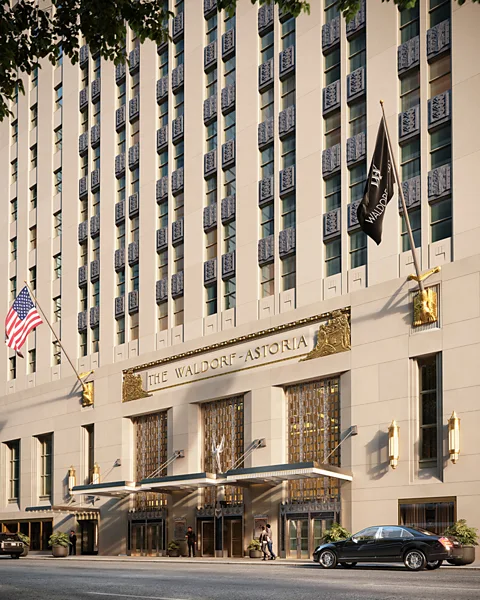Unveiling the Legacy of the Waldorf Astoria
The Waldorf Astoria New York stands as a monumental figure in the hospitality industry, shaping not only its home city but also setting standards that have influenced hotels around the globe. Opening its doors in 1893 and later relocating to its famed Park Avenue location in 1931, the Waldorf quickly evolved into a beacon of sophistication and innovation. Over the years, it has welcomed an array of distinguished guests, including cultural icons, royals, and heads of state.
Historian David Freeland, author of the book American Hotel: The Waldorf-Astoria and the Making of a Century, notes that upon its reopening in 1931, the hotel symbolized hope during challenging times. “It was not just a city icon but a national beacon of recovery,” Freeland remarked, referencing President Hoover’s address at the hotel’s reopening, emphasizing its role as a revitalizing force.
After an extensive eight-year renovation, the Waldorf has once again opened its doors, restoring historical features while also unveiling stunning new interiors curated by renowned designer Pierre-Yves Rochon. Guests can now indulge in a luxurious stay and savor exquisite dining experiences. However, reservations for event spaces will not commence until September. Here are six captivating facets of the Waldorf Astoria’s illustrious history.
1. Pioneering Modern Hospitality
At the forefront of luxury hospitality, the Waldorf Astoria was a trailblazer, being the first hotel to offer many now-standard amenities such as room service, in-room telephones, and celebrity chefs. Its opulent design and grand lobby made it a favored venue among New York’s elite.
2. Redefining Fine Dining
During an era when dining out was uncommon for high society, the Waldorf opened its restaurants to the public, making it socially acceptable for women to dine alone. Under the leadership of famed chef Oscar Tschirky, who was famously known as “Oscar of the Waldorf,” the hotel became synonymous with culinary innovations including eggs Benedict, Waldorf Salad, and red velvet cake. The recently introduced Lex Yard restaurant pays tribute to these iconic dishes with updated renditions.
3. The Return of Peacock Alley
The historic passage known as Peacock Alley, which connected the original Waldorf and Astoria hotels, has been lovingly restored. This elegant space features a new bar, original lobby clock from 1893, and even a grand piano once owned by composer Cole Porter, who resided at the hotel for almost three decades. It remains a vibrant gathering spot for guests to enjoy cocktails in style.
4. A Secret Train Track
When it came time for construction, the Waldorf Astoria acquired an entire city block, including New York Central Railroad’s railyard. The hotel cleverly incorporated a hidden train track beneath its premises, utilized by distinguished guests like Franklin D. Roosevelt to discreetly enter without drawing public attention to his disability.
5. Partner to the United Nations
When the United Nations established its headquarters in New York City in 1946, the Waldorf became a critical partner. Addressing concerns about racial segregation in accommodations, the hotel agreed to serve all guests irrespective of race, thereby securing its status as the UN’s preferred hotel for accommodation and events.
6. Spacious Accommodations
Originally boasting 450 guest rooms, the Waldorf grew to accommodate 1,400. Post-renovation, the hotel has reduced its room count to 375, significantly increasing the average size to over 570 square feet, making them larger than many standard New York City apartments.
| Feature | Description |
|---|---|
| Pioneering Amenities | First to offer room service, in-room phones, chef-driven dining. |
| Famous Dishes | Eggs Benedict, Waldorf Salad, and red velvet cake. |
| Peacock Alley | Restored iconic promenade for guests to see and be seen. |
| UN Partnership | Served all guests regardless of race during segregation. |
| Room Size | Average of over 570 square feet post-renovation. |
The revival of the Waldorf Astoria not only marks the return of a historic landmark but also reaffirms its position as a cornerstone of luxury hospitality, ensuring its legacy will continue for generations to come.


